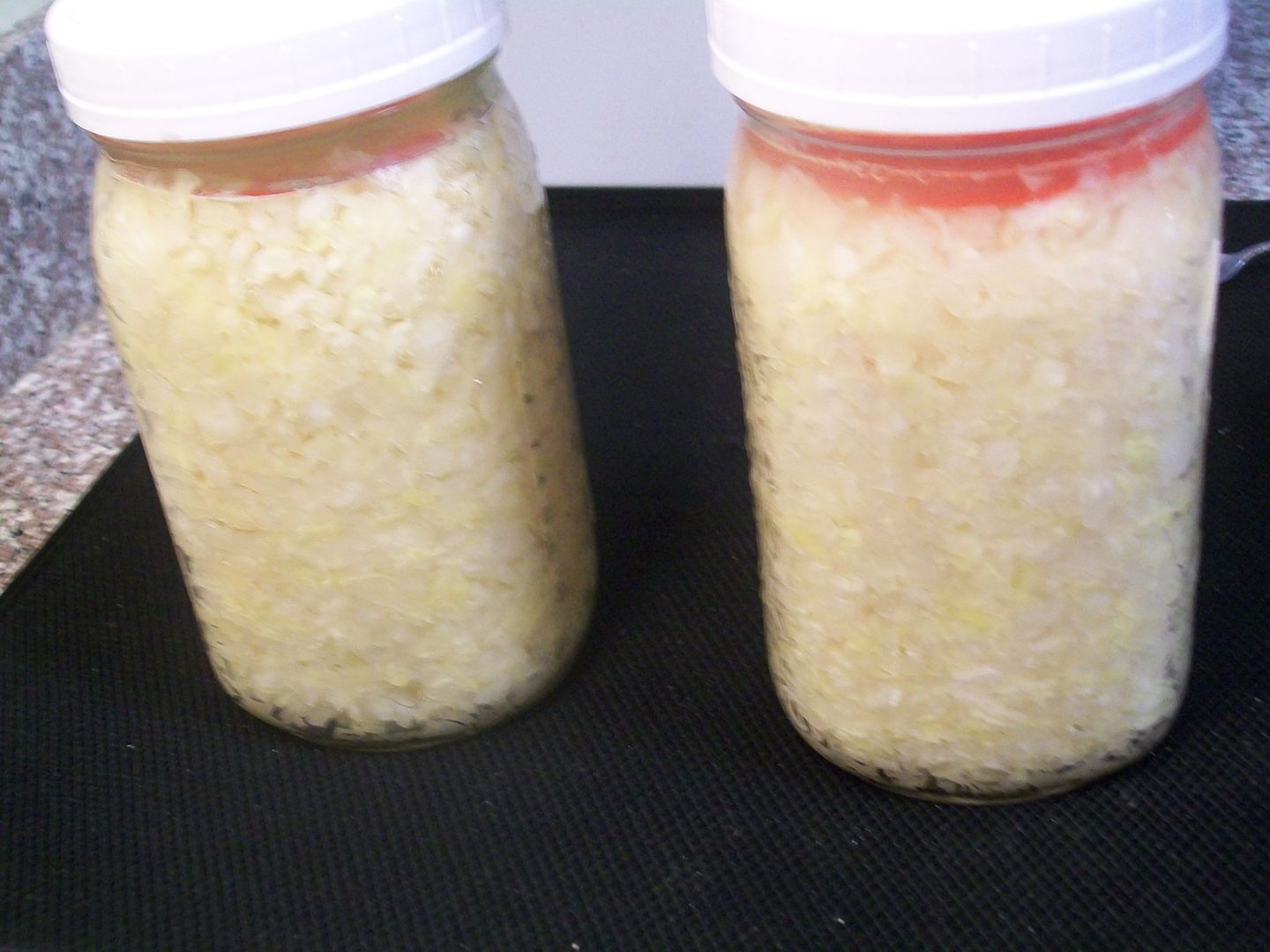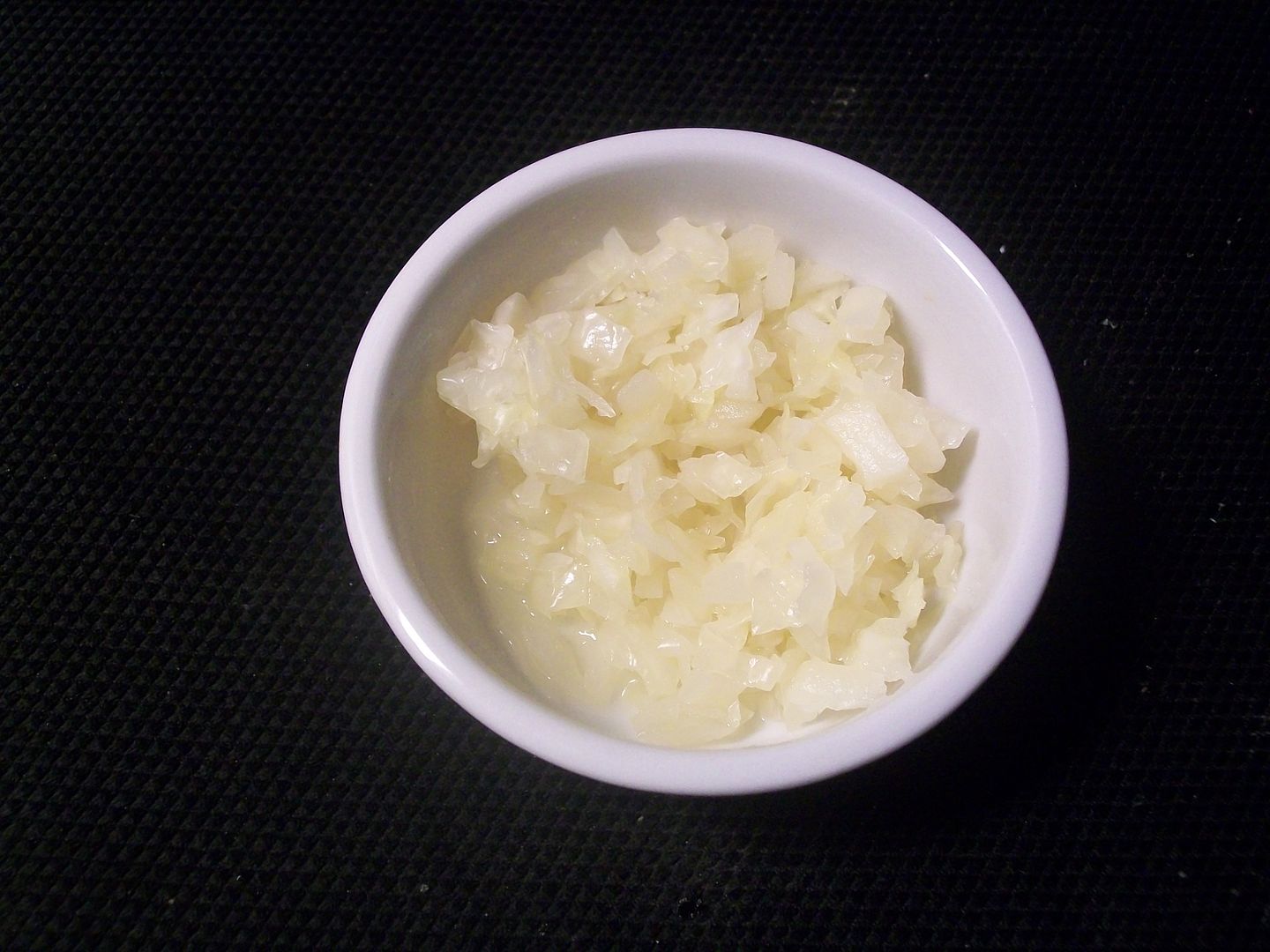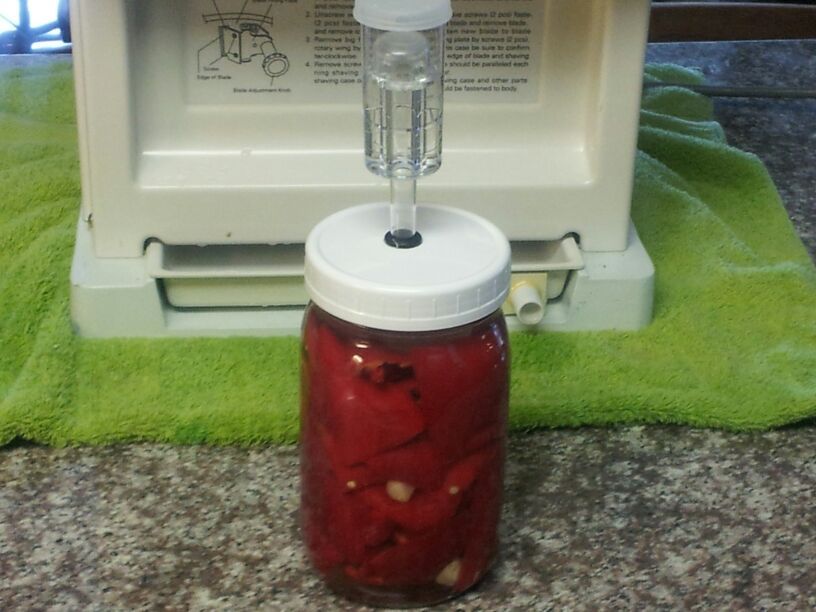

|
Information and discussion about canning and dehydrating tomatoes and other garden vegetables and fruits. DISCLAIMER: SOME RECIPES MAY NOT COMPLY WITH CURRENT FOOD SAFETY GUIDELINES - FOLLOW AT YOUR OWN RISK
|
 |
|
|
Thread Tools | Display Modes |
|
|
#466 |
|
Tomatovillian™
Join Date: Feb 2006
Location: Den of Drunken Fools
Posts: 38,539
|
Shank is the word you guys are looking for.
A hock/knuckle is right before the hoof the shank above that. A trotter is the foot itself. Worth |
|
|

|
|
|
#467 |
|
Tomatovillian™
Join Date: Jan 2014
Location: Tomato Cornhole
Posts: 2,550
|
It's day 15 and I had to taste some, it's still crunchy and taste good but nothing like store bought stuff. It has less of a vinegar taste and not as sour. I'll know in a few hours if it's right.
I'm guessing after the initial fermenting starts that it settles down as far as perking, am I right? Does it look normal?  
|
|
|

|
|
|
#468 |
|
Tomatovillian™
Join Date: Feb 2006
Location: Den of Drunken Fools
Posts: 38,539
|
It looks perfectly fine and I bet if they tested the pH it would be in the high 2's or low 3's.
It isn't going to taste like store bought stuff because they ferment longer and it is garbage anyway for the most part. Yes the activity slows down as a different bacteria starts to work and the other stops. And I mean real slow. If you like it where it is at then it is fine. even if you ate it before it was completely fermented you would be fine. The only thing you can possibly do to screw up is to hot water bath can it and kill all the bacteria before the acidity gets low enough. Which isn't likely after two weeks of active fermentation. I have some two week that I canned that looks just about like yours and a three week that is just a little darker. Neither of which tastes anything like store stuff. It was put up in Dec of last year and still looks great. Worth |
|
|

|
|
|
#469 | |
|
Tomatovillian™
Join Date: Jan 2014
Location: Tomato Cornhole
Posts: 2,550
|
Quote:
http://tigabaluarte.blogspot.com/200...w-na-pata.html |
|
|
|

|
|
|
#470 |
|
Tomatovillian™
Join Date: Feb 2006
Location: Den of Drunken Fools
Posts: 38,539
|
We posted right on top of each other my answer to your kraut question it above your post.
My electricity was out for hours here I know how the grid is set up here and as soon as it went out I got on my motorcycle to see what was going on. The street traffic light was working I couldn't find anything on our part of the grid so I knew it was going to be awhile. The guy couldn't find anything either replaced the main fuse to our main branch line for this neighborhood and so far so good. Shanks are higher than a cats back I wont buy them anymore. I'm not paying 6 something a pound or more for a bone.  Worth |
|
|

|
|
|
#471 |
|
Tomatovillian™
Join Date: Jan 2014
Location: Tomato Cornhole
Posts: 2,550
|
I want to let it go to get all the good bacteria. Doesn't the last week start to grow the final bacteria process? I think I read that somewhere.
I'm also surprised at how packed it still is, I thought after all this time the cabbage would shrink some but it's still solidly packed and I'm sure it'll last a while. Also remember this is the cabbage that was boiled to loosen the leaves for cabbage rolls so I'm glad it looks right. You had me worried at first. I have 12 cabbage plants going now so I'll be doing a little more later. |
|
|

|
|
|
#472 |
|
Tomatovillian™
Join Date: Jan 2014
Location: Tomato Cornhole
Posts: 2,550
|
Shanks are high here too if you don't shop around. We have SuperOne Foods here that's a cheap/discount store that has really good meat. They have it labeled in Spanish but it's only 3.99a# so it's not too bad. When it's on sale I can get a 2 pack about 6" around for $4.00 and I scoop them all up. My family calls it soup meat, they thought I was crazy the first time I cooked it and now they ask for it.
|
|
|

|
|
|
#473 | |
|
Tomatovillian™
Join Date: Feb 2006
Location: Den of Drunken Fools
Posts: 38,539
|
Quote:
Where or what is the last week there is no last week but I know what you mean.  Many folks of old just kept it in the wood barrel and ate out of it as they wished. It got better according to them with age. I dont care for it that sour myself. Lots of the stuff I have going on just sits on the counter. The peppers calmed down and the new limes with way less salt are active. The old limes are in the refrigerator they were done in a 9 pound brine saturated with salt. With the salt you put in the cabbage bad stuff wont nor can it grow only good bacteria. If it goes south you will know it big time. I bet the kraut tastes somewhat like a refrigerator kosher half sour pickle. |
|
|
|

|
|
|
#474 |
|
Tomatovillian™
Join Date: Jan 2014
Location: Tomato Cornhole
Posts: 2,550
|
I thought 3 weeks was the norm for kraut? I could eat it now as is, it's good and not sour. I'm a rookie so it's all experimenting. I just checked the site that I bookmarked explaining the bacteria process.
65° Fahrenheit (18° Celsius), has the best flavor and color and higher vitamin C levels. 60° Fahrenheit (16° Celsius), the curing may take 6 to 8 weeks. 70 to 75° Fahrenheit (21-24° Celsius), however, also has good flavor and is ready in only a week or two. Above 90° Fahrenheit (32° Celsius), the kraut will ferment in just seven to ten days, but most of the work will be done by homofermentative bacteria, which produce lactic acid but not acetic acid and other flavors which contribute to the complex flavor of a really good sauerkraut. The best quality sauerkraut is fermented for a minimum of 20 days. This time span ensures good flavor development, proper acidity level and complete consumption of all the sugars in the cabbage. The L. mesenteroides do most of their work in the first 3 days. They are the smallest of the three bacteria studied. They produce lactic acid, acetic acid (vinegar), ethyl alcohol and mannitol which all contribute to the characteristic flavor of high quality sauerkraut. If the fermentation temperature is higher than 72° Fahrenheit (22° Celsius) they might not grow, which would be detrimental to the flavor of sauerkraut. The L. mesenteroides also produce carbon dioxide (soda gas), hence the bubbles you see floating to the surface along with brine being pushed out of the jar. The L. plantarum does most of the work for the longest time period, from day 3 to day 16. Its only job is to eat sugar and produce lactic acid. The lactic acid that acts as a preservative, supports digestion, inhibits growth of harmful bacteria, increases the bio-availability of Vitamin C, among other jobs. Ideally, you don’t want to stop the work of the lactic acid bacteria by putting your sauerkraut into cold storage before day 16. The L. pentoaceticus “finish-off” the sauerkraut during days 16-20 by lowering the acid level a slight bit more. So, make it your goal to ferment for the full 3 weeks if your fermentation temperature is in the ideal range of 65-72° Fahrenheit (18–22° Celsius). |
|
|

|
|
|
#475 |
|
Tomatovillian™
Join Date: Feb 2006
Location: Den of Drunken Fools
Posts: 38,539
|
All of the above will be determined by salt content not just temperature.
The hotter it is the more salt you need up to a point of you might as well forget it and preserve in a good brine that will float a fresh raw egg good. The ((fresh)) raw egg brine meter has been around for centuries to cure olives. It was taught to me by a Sicilian woman by way of her son over the phone. This woman passed away some time ago. She walked me through semolina bread, pasta, fermenting and curing olives. I have yet to cure an olive but hope to soon. I can still hear her telling her son in Sicilian to tell me what to do after looking at pictures I sent them on my phone. I owe a lot of my abilities to this fine lady her husband and her son from Palermo Sicily. Look at this? Oven too low. Not worked long enough. Bake longer. Let dry out more. Looks great.  Worth |
|
|

|
|
|
#476 |
|
Tomatovillian™
Join Date: Jan 2014
Location: Tomato Cornhole
Posts: 2,550
|
I found a critic/guinea pig for the kraut and she likes it so it must've worked. I took the airlocj off and put on a plastic kid and in the fridge it went. I want to let the other jar go for a while to compare the taste.
I found for the 1st time Fresno peppers at Wallymart so I bought some to feed the addiction. I added a few cloves of garlic and I'm off to another ferment. I also bought some beets to try Kvass. I need a good recipe that works so someone help me out. I got the idea from someone that posted in this thread but can't remember who it was, it was the kimshi addict, I think it was Karrr_Luda. Here's the peppers 
|
|
|

|
|
|
#477 |
|
Tomatovillian™
Join Date: Feb 2006
Location: Den of Drunken Fools
Posts: 38,539
|
Did you save some Fresno seeds?
You are going to love the Fresno peppers. |
|
|

|
|
|
#478 |
|
Tomatovillian™
Join Date: Jan 2014
Location: Tomato Cornhole
Posts: 2,550
|
I did save the seeds and have them drying now. My grow list for next year just keeps growing.
|
|
|

|
|
|
#479 | |
|
Tomatovillian™
Join Date: Jun 2010
Location: Romania/Germany , z 4-6
Posts: 1,582
|
Quote:
Now more thoughts about fermenting. After a few more successful retries at pickling peppers I would say the results are as should, but they are still not like original pickled greek peppers that I can buy (at a very high price from one turkish shop). There is something in their recipe which is different, and I don't know what. I don't think it's just the variety used, it's too different. I used lots of garlic too, thinking this may be the secret, and it's still not the same. First of all I think they stop the fermentation fairly early with tons of salt (they are really salty, and not very sour but definitely don't taste half pickled either). My opinion is that they add some herbs or 'stuff' that I have no idea which they are. It sometimes has a slight smell of olives (like kalamata 'cured?' olives, the somewhat pink ones you can buy, which are the absolute best olives I have trie). Also it's tough to find good peppers for pickling, too many are too hard in texture or thick skin, or very commonly reaaly seedy. This is what I tried this year: Golden Greek - thin skin but kinda hard texture, very thin walls, very good for grilling actually, but less so for pickling, has a bitter taste pickled. Almost no heat. Caloro - heat is some, but not too much. Extraordinarily seedy, basically useless, otherwise if you core them they are probably the best. (not much will be left after coring). Jalapeno TAM - supposedly milder jalapeno, dunno, it was really, really hot for me. I had to remove core and some veins to make them milder. Best texture, really thin skin, not too much seeds, but taste pickled is rather average (just sour). Aci Biber - means hot pepper in Turkish, which means it's one of 100 with the same name. Kinda seedy, kinda hard, very nice flavour eaten raw still small and tender (probably should be pickled at that stage too if you can gather enough). Next year I'll have to try some others, will keep the Jalapeno. I had Hungarian Wax but it didn't want to germinate. |
|
|
|

|
|
|
#480 | |
|
Tomatovillian™
Join Date: Nov 2011
Location: MA/NH Border
Posts: 4,919
|
Quote:
Could it be that they simply add some of the brine the olives are cured in at some stage of the process? |
|
|
|

|
 |
|
|
